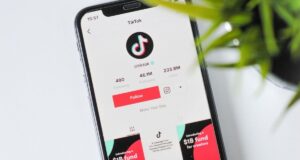
Facebook is a social network that is on everyone’s lips. Its greatest virtue, virality, the possibility of being able to spread the message we want in a cheap and simple way. Below we show how you can take advantage of these advantages.
Thanks to Facebook you have a good opportunity to make your brand known, as long as we do not cross the Spam limit, disturbing the rest of the users. These are some of the (free) ways to publicize our product, company or cause on Facebook.
1. Our user profile
It is the area that we control the most; We may, for example, display the address of our website or information about our product. Our profile is a page that has a lot of traffic.
Some users carry out a strategy of joining many groups or becoming friends with many users (customers, friends, suppliers, acquaintances and strangers). In this way, they manage to redirect many visits to their user profile. But be careful, it is not advisable to cross the Spam limit.
If you don’t talk about your company, product, event, etc. no one else will!
2. Groups
It is the easiest way to do viral marketing. It allows us to start creating a community around our brand. If we offer content that is interesting to the members of the group, they will encourage their friends to join the group, which will grow, and viral marketing will begin to work. The groups we belong to appear in our profile, so a large amount of traffic is redirected to them.
The groups have certain problems:
– As the group grows there are usually problems sending messages to its members (apparently, this problem happens when the group begins to have more than 1000-1500 members).
– If the group becomes well known, it may become a target for spammers.
– It is not possible to add applications to groups, for that, we have Pages.
3. Pages (Pages)
They are similar to groups but have some differences:
– They can be customized more than groups. Add HTML or Flash, applications, etc.
– They are more striking in user profiles.
– There are no limits when sending messages to users.
– Those who have become fans of a page cannot send invitations to their friends to join it. Users should see that their friend has become a fan of a page in their profile or mini feed, and add themselves. A certain virality is lost.
– Facebook is ensuring that the pages that are created are made by people who have permission.
4. Eventos (Events)
Event pages, as their name suggests, are related to some event: a talk, a course or a conference. They can also be used to announce the launch of a product or to announce a significant change that is going to occur in the company.
These Event pages, in addition to allowing viral marketing, allow us to deepen the relationship with clients and users. In addition, we can add photographs, videos and other material used in the event.
On the other hand, thanks to Events it is easier to contact the people who are going to go to it, being able to have a list of guests and people who have confirmed, so that people who have doubts can see who is going, etc.
5. Notes and Photos
It allows us to publish our photos and blog articles on Facebook so that we can show them to our friends.
It can help our contacts get to know our brand and talk about it. It is important that the content is interesting and that we do not spam.
In photos it is important to tag the people who appear in them. In this way, these people will receive a message that notifies them that they appear in a photo. It can help us attract the attention of certain people who interest us.
6. Messages
It is similar to email. Allows you to send messages from user to user. It does not have certain functionalities that emails have such as search, classification, filters, etc.
Although on Facebook it is not possible to see the profile of those users who are not our friends, there is the possibility of being able to send them messages. It can be a good opportunity to have the first contact with those people we are interested in meeting.
Of course, if we send too many messages, Facebook may think that we are spamming and may close our account.
7. Mercado (Marketplace)
It consists of placing classified ads. We may be interested if we want to buy or sell something, make a job offer, etc.
Ads can be placed on any network to which the user belongs. But if we want to put it on more than one network, we have to pay a dollar.
If we place too many ads (that are unpaid), Facebook may think that we are doing Spam and may close our account.
8. Share / Posted Items
Thanks to this application, you can publicize your group, page, event, photo or application in several ways:
-Giving it its own personality by putting it among the published elements that appear on our profile.
– Sending it as a message to our friends.
If you put it on your profile you will get some clicks, but it is much more effective to send a message to friends, you can get a higher click rate.
9. Redes (Networks)
For users, it is similar to groups. Some common examples are a certain university network, work network, or a geographic network. Networks can offer the following advantages:
– A new way to publicize and discover events, announcements, published elements, etc.
– Anyone can write on the wall or in the discussion forum.
They are also a known place for spam. For this reason, the messages that are posted on the networks are susceptible to being perceived as Spam, even if they are not.
10. Mini Feed y News Feed
When a user does any of the actions we describe below, Facebook puts it in their mini Feed; join a group, go to an event, become a fan of a page, be tagged in a photo, change your status or profile, etc. All these actions appear in our mini Feed and our friends can see it. This helps, for example, to make our brand known.
Each user’s mini Feed appears on their profile, and their friends’ Feeds appear on their Facebook home page under the name “News Feed.” This News Feed presents us with the activity of all our friends.
A user’s mini Feed can be seen by many friends, making it a good starting point to start a viral marketing campaign.
Via: CodeSyntax
Source: https://www.socialblabla.com/consejos-basicos-para-hacer-marketing-en-facebook.html


